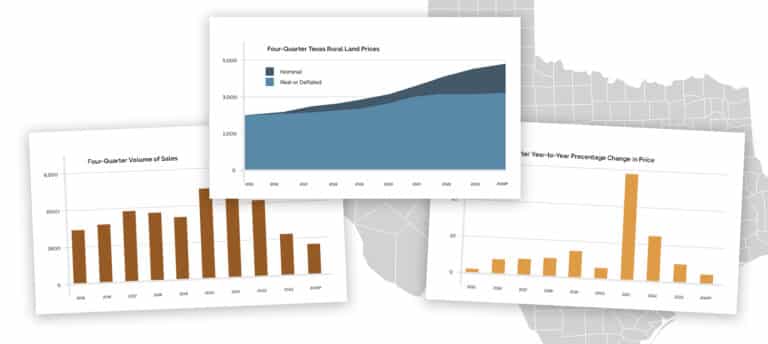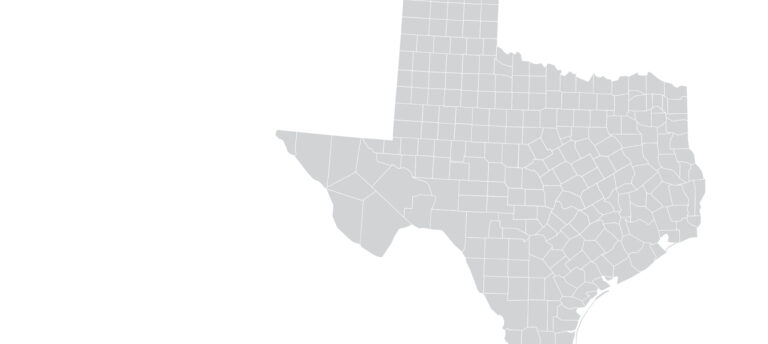Areas that stay moist for long periods during the year may have potential for duck habitat. Wetland improvement can provide many benefits including water and wildlife conservation and an added income stream from duck and geese hunting, bird watching, and other ecotourism activities. In addition, wetland improvement normally improves property values.
Technical help and funds are available to private landowners for developing waterfowl habitat if they have suitable areas. In 1991, Ducks Unlimited, Texas Parks and Wildlife Department (TWPD), U.S. Fish and Wildlife Service and USDA Natural Resources Conservation Service (NRCS) partnered to create the Texas Prairie Wetlands Project (TPWP). The primary goal of this project is to provide habitat for wintering waterfowl that could improve survival rates and body conditions before spring migration. TPWP works with private landowners to restore, enhance, and create shallow-water wetlands through a 30-county focus area along the Gulf of Mexico.
Ducks Unlimited has worked to conserve more than 228,000 acres of waterfowl habitat throughout Texas since 1985. Although Ducks Unlimited was organized by a group of hunters, conservation is their primary objective and many of their members do not hunt. The biggest concentration of Ducks Unlimited projects are on the Gulf Coast; yet a heavy concentration exists in East Texas and others are scattered across Central and South Texas and the Texas Panhandle.
“We focus on regions that have the greatest need of habitat improvement and offer the greatest conservation benefit,” says Todd Merendino, Manager of Conservation Programs for Ducks Unlimited. “Over time, our priorities and emphasis may shift due to landscape changes and habitat threats. The current focus is on the Texas Prairie Wetlands Project on the Texas Coast because of water fowl habitat degradation due to land fragmentation and drought. During the 1980s we were more active in East Texas because that was where we were needed the most. We don’t do much work in the Texas Panhandle due to the playa lakes providing natural bodies of water with little or no construction requirements. In other areas, construction of levees and flood gates is necessary for managing water levels.”
TPWP PROJECTS
“TPWP projects are partly responsible for community economic revitalization in areas where incomes were negatively impacted by drought,” explains Matt Kaminski, Regional Biologist with Ducks Unlimited. “Wetland construction provides work for contractors and sales for pipe distributors and other types of suppliers. Cost share money helps pay for drilling water wells and installing pumps.
“In addition to serving as a source of water for duck habitat, these wells allow rice farmers to go back into production. Due to the drought, they have been unable to draw irrigation water from the Colorado and Brazos Rivers. Rice and waterfowl are very compatible since both require shallow water and grain residue from harvesting provides a food source.”
Beef producers also benefit, because wetlands can provide additional water for their livestock. Since waterfowl habitat is only required during the fall, winter and early spring, wetlands can be drained and used for pasture in the late spring and summer. Residual water stored in the soil improves grass production for grazing.
“New enterprises, such as bird watching and photography, have been initiated due to wetland development,” Kaminski continues. “These ecotourism activities in addition to duck and geese hunting provide additional income streams to landowners. Local businesses such as restaurants, motels, and service stations also benefit beneficially from ecotourism and waterfowl hunting. Some wetland sites are being used to educate school children as well as adults on wetland ecology and aquatic ecosystems.”
GETTING HELP
“For a landowner interested in developing habit for ducks and other waterfowl, the first step is to contact a member agency of TPWP,” says Kevin Hartke, Waterfowl and Wetland Habitat Specialist with TPWD. “A biologist will schedule a site visit with the landowner to assess the potential for a project. If a viable project meets program guidelines, a Wetland Development Agreement (WDA) will be drafted. The WDA, project design, and cost estimates are returned to the landowner for their review and signature. Projects may be combined with USDA conservation programs.”
Important funding considerations are landowner contributions of cash and in-kind as well as the overall habitat benefit to cost ratio. Project size should be a minimum of 20 acres of surface water or a combination of smaller sites that equal at least 20 acres. Sites less than 20 acres are evaluated on a case by case basis. Projects include management of harvested croplands, waterfowl food plots, moist soil areas, forested wetlands, and other created or natural existing wetlands to increase biodiversity for waterfowl and other wetland dependent species.
“Landowner cooperators may receive up to 65 percent cost share based on the number of acres of the project site and the cost per acre,” says Merendino. “The cooperator is responsible for at least 35 percent of improvement costs. Financial cost-share assistance is available for habitat enhancement, levee construction, and the installation of water control structures and delivery systems. Technical biological and engineering assistance plus a detailed aquatic wildlife management plan are also provided to cooperating landowners.”
“The landowner is responsible for routine operation and maintenance of the project site,” states Hartke. “It is required that the landowner grant project access to a field representative for monitoring purposes. Operations and maintenance primarily involve water level and aquatic vegetation. During an average year, 10 to 18 inches of surface water from precipitation, run-off wells, or irrigation provider must be present on an average of four months between September 1 and April 30. Water may also be maintained on the project site during spring and summer if it is compatible with agricultural, wildlife, and other land use practices. Some landowners farm or graze cattle on wetland areas during these periods in order to derive more income from the property.”
“A basic goal of managing habitat for waterfowl is to provide food (seed-bearing plants) and open water for birds to land,” Hartke continues. “Left undisturbed, aquatic plant communities become less favorable for waterfowl due to species changes. Seed-bearing plants are replaced by those that are mostly vegetative and produce little or no seed. The invasive plants may encroach upon open water, restricting ducks and geese access to the wetlands. About every three to four years, water should be drained from shallow wetland impoundments and the amount of vegetation reduced. Roller chopping and disking are acceptable vegetation management practices that encourage growth of desirable plants.”
NORTHEAST TEXAS
Kenneth Braddock, Manager of the Rosewood Ranch at Ennis, Texas continually studies opportunities to further diversify using resources that nature provides. The Ennis ranch is one of five owned by a subsidiary of The Rosewood Corporation, which is a Dallas-based company owned by the Caroline Hunt Trust Estate. Braddock has managed the ranch with a holistic approach for over twenty years.
A portion of the Ennis Ranch consists of flat land (“bottoms”) surrounded by long sloping hills. During periods of extended rain, the flat land acts as a basin catching excess water that isn’t captured by the continual grass cover on the hillsides.
“When I came to the ranch, the bottoms were extensively farmed,” Braddock said. “Farming these areas presented a challenge since the soil was often saturated when a crop needed to be planted or harvested. The late Bunker Sands (1948 – 2003) felt that the flat ground was actually wetlands and should be managed in that manner. Sands at that time was the Executive Director of The Rosewood Corporation. After Sands discussed his idea with me, I agreed to work with him on wetland development.”
Two thousand acres of wetlands was established using a levee system, with outlets to regulate water levels. Flow gates are used to move water from one diked area to another. Flooded areas serve as duck habitat and when dry, they are grazed by the ranch cattle. Periodically areas are burned to create bare spots where ducks can land and to release seed-bearing plants.
Some of the wetlands were left in hardwoods to create habitat for wood ducks and Mallards, whereas the open wetlands attract diver and paddle ducks. The wooded wetlands contain water when the trees are dormant. These areas are drained when the trees start budding, because woody plants cannot tolerate standing water while they are in a growth stage . All the wetlands are leased to a duck hunters club with rights reserved for use by the Rosewood family. The created diversity in the wetlands provides a large variety of ducks to hunt.
Bryan Glass, owner of Redleg Outfitters established a 38-acre and a 79-acre wetland on the Glass Ranch near Paris, Texas using cost-share money from the NRCS Wetlands Restoration Program (WRP). In addition to the wetlands, the ranch has several large lakes, small ponds, and bottomland areas that support large amounts of puddle ducks and divers. These sites are well managed and are used by Redleg Outfitters to provide successful duck hunts.
Wetland restoration creates habitat for ducks, geese and other waterfowl; conserves and provides water for other uses; contributes financially to local economies; and increases value of marginal land.


